-
 Bitcoin
Bitcoin $114400
1.32% -
 Ethereum
Ethereum $3499
2.20% -
 XRP
XRP $2.922
4.26% -
 Tether USDt
Tether USDt $0.0000
0.03% -
 BNB
BNB $752.6
1.53% -
 Solana
Solana $161.8
1.64% -
 USDC
USDC $0.9999
0.01% -
 TRON
TRON $0.3267
1.32% -
 Dogecoin
Dogecoin $0.1991
3.02% -
 Cardano
Cardano $0.7251
3.29% -
 Hyperliquid
Hyperliquid $38.32
3.36% -
 Stellar
Stellar $0.3972
7.58% -
 Sui
Sui $3.437
2.74% -
 Chainlink
Chainlink $16.29
3.65% -
 Bitcoin Cash
Bitcoin Cash $545.3
3.70% -
 Hedera
Hedera $0.2482
7.49% -
 Ethena USDe
Ethena USDe $1.001
0.03% -
 Avalanche
Avalanche $21.40
2.02% -
 Toncoin
Toncoin $3.579
1.56% -
 Litecoin
Litecoin $109.3
2.20% -
 UNUS SED LEO
UNUS SED LEO $8.951
-0.18% -
 Shiba Inu
Shiba Inu $0.00001220
2.75% -
 Polkadot
Polkadot $3.613
2.99% -
 Uniswap
Uniswap $9.173
3.78% -
 Monero
Monero $302.6
2.62% -
 Dai
Dai $0.0000
0.00% -
 Bitget Token
Bitget Token $4.320
1.52% -
 Pepe
Pepe $0.00001048
3.40% -
 Cronos
Cronos $0.1314
4.33% -
 Aave
Aave $259.4
3.54%
From Registration to Trading: Bitcoin ETF Full Process Operation Guide
A Bitcoin ETF offers investors exposure to Bitcoin's price without the need to directly own or store the cryptocurrency, bridging traditional finance with digital assets.
Jun 20, 2025 at 07:35 am
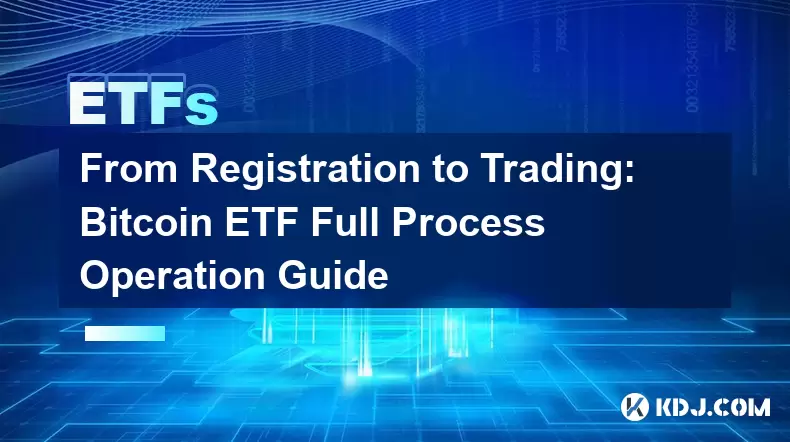
Understanding Bitcoin ETFs: What They Are and Why They Matter
A Bitcoin Exchange-Traded Fund (ETF) is a type of investment fund that tracks the price of Bitcoin and is traded on traditional stock exchanges. Unlike directly purchasing Bitcoin through a cryptocurrency exchange, an ETF allows investors to gain exposure to Bitcoin without the complexities of owning and storing the digital asset themselves. This makes it especially appealing to institutional and retail investors who are familiar with conventional financial markets but hesitant to engage directly with crypto platforms.
The importance of Bitcoin ETFs lies in their ability to bridge the gap between traditional finance and the emerging cryptocurrency ecosystem. By offering a regulated and accessible investment vehicle, they bring legitimacy and increased liquidity to Bitcoin as an asset class. For many investors, this eliminates concerns about security, private key management, and volatility risks associated with direct ownership.
Before diving into the operational steps of investing in a Bitcoin ETF, it’s essential to understand how these instruments function within the broader market structure. ETFs typically hold Bitcoin either directly or through futures contracts, and their shares represent proportional ownership in the underlying assets. The value of the ETF fluctuates throughout the trading day based on supply and demand dynamics, just like a regular stock.
How to Register for Access to Bitcoin ETF Trading
To begin investing in a Bitcoin ETF, the first step is to ensure you have access to a brokerage platform that offers ETF trading capabilities. Most major online brokers now support ETF investments, including those tied to cryptocurrencies. You will need to open and verify a brokerage account, which typically involves submitting identification documents such as a government-issued ID and proof of address.
Once your account is verified, you should check whether your broker provides access to Bitcoin ETFs. Not all platforms list every available ETF, so it’s crucial to confirm availability before proceeding. Some popular brokers that offer Bitcoin ETF options include Fidelity, Charles Schwab, and Interactive Brokers.
After confirming eligibility, you may need to enable specific permissions or complete a short questionnaire regarding your understanding of ETF risks. This is a regulatory requirement designed to ensure that investors are aware of the potential downsides, including market volatility and tracking errors. Some brokers might also require additional documentation if you're investing through retirement accounts like IRAs.
Once everything is set up, you can proceed to fund your account using bank transfers, wire transfers, or linked debit/credit cards. Be mindful of any minimum deposit requirements or fees associated with funding methods. Once your account is funded, you’re ready to move on to locating and selecting the appropriate Bitcoin ETF for your investment strategy.
Locating and Selecting the Right Bitcoin ETF
With multiple Bitcoin ETFs now available in global markets, choosing the right one requires careful consideration. Each ETF has its own unique structure, expense ratio, liquidity, and tracking methodology. Investors should compare key metrics such as net asset value (NAV), daily trading volume, and premium/discount to NAV before making a selection.
Popular Bitcoin ETFs include ProShares Bitcoin Strategy ETF (BITO), ARK 21Shares Bitcoin ETF (ARKB), and VanEck Bitcoin Trust (VBTC). These funds differ in terms of management style—some use direct Bitcoin holdings while others rely on futures contracts. It's important to understand how each fund operates and whether it aligns with your investment goals.
Expense ratios are another critical factor to evaluate. While some ETFs charge less than 0.5% annually, others may be higher depending on their structure and provider. Lower fees generally translate to better long-term returns, so it pays to do thorough research before committing capital.
Additionally, investors should examine the liquidity of the ETF, which refers to how easily shares can be bought and sold without significantly affecting the price. High average daily trading volumes indicate strong market interest and tighter bid-ask spreads, reducing transaction costs. Checking the ETF’s performance history and comparing it against Bitcoin’s spot price can help identify any significant tracking discrepancies.
Lastly, consider the regulatory environment and custodial backing of the ETF. Funds managed by reputable financial institutions with robust custody solutions tend to inspire greater confidence among investors. Always review the fund’s prospectus for detailed information on its objectives, risks, and fee structure.
Executing Your First Bitcoin ETF Trade
Once you’ve selected a suitable Bitcoin ETF and ensured your brokerage account is fully set up, it’s time to place your trade. Begin by searching for the ETF ticker symbol on your broker’s trading platform. Most platforms allow users to search via keyword or browse through ETF categories.
Upon locating the ETF, review its current market data, including price, change percentage, volume, and bid-ask spread. These details provide insight into the ETF’s real-time performance and liquidity conditions. If you're placing a market order, the trade will execute at the best available price. However, for more control over execution prices, consider using limit orders instead.
Before finalizing the trade, double-check the number of shares you intend to buy and confirm the total cost, including any applicable commissions or fees. Some brokers offer commission-free ETF trading, but others may charge a small fee per transaction. It’s also wise to monitor the ETF’s closing date and settlement period, as trades typically settle two business days after execution (T+2).
If you're new to ETF investing, start with a small position to get accustomed to how the fund behaves relative to Bitcoin’s price movements. Track your investment closely and assess whether the ETF accurately reflects Bitcoin’s performance. Any persistent deviation could indicate issues with the fund’s tracking mechanism or liquidity constraints.
Finally, consider setting up alerts or notifications for major price changes or corporate actions related to the ETF. Many platforms allow users to customize alerts based on price thresholds, volume spikes, or news events. This helps maintain awareness and enables timely decision-making.
Managing and Monitoring Your Bitcoin ETF Investment
After successfully purchasing Bitcoin ETF shares, ongoing management becomes essential. Unlike holding physical Bitcoin, where private keys and wallets require active maintenance, ETFs simplify ownership but still necessitate periodic review. Regularly check your portfolio allocation to ensure it aligns with your risk tolerance and investment strategy.
One effective way to monitor performance is by comparing the ETF’s returns against Bitcoin’s spot price over time. If there’s a noticeable divergence, investigate whether it stems from tracking error, expense drag, or market conditions affecting the fund’s structure. Review quarterly reports and fund disclosures to stay informed about changes in holdings, management strategies, or fee adjustments.
For investors seeking long-term exposure, dollar-cost averaging (DCA) can be an effective strategy. By investing fixed amounts at regular intervals, you reduce the impact of short-term volatility and avoid timing-related risks. Many brokers offer automated investment plans that allow recurring purchases of ETFs.
If you're considering selling your ETF shares, analyze factors such as market trends, personal financial goals, and tax implications. Profits from ETF sales may be subject to capital gains taxes, so consult a tax advisor to optimize your exit strategy. Additionally, keep track of dividend distributions if the ETF generates income, though most Bitcoin ETFs currently do not pay dividends due to the nature of the underlying asset.
Lastly, remain vigilant about macroeconomic developments that could influence Bitcoin’s price and, consequently, the ETF’s value. News related to regulation, adoption, or technological advancements in the cryptocurrency space often drives investor sentiment and market behavior.
Frequently Asked Questions
Q: Can I invest in a Bitcoin ETF through my retirement account?
Yes, many brokers allow Bitcoin ETFs to be held within retirement accounts such as IRAs and 401(k)s. However, eligibility depends on your broker’s offerings and the specific ETF structure. Always confirm with your broker and review any custodial requirements before investing.
Q: Do Bitcoin ETFs offer leverage or inverse options?
Some providers do offer leveraged or inverse Bitcoin ETFs designed to amplify returns or profit from declines. These products carry higher risk and are typically suited for experienced traders rather than long-term investors.
Q: Is there a difference between physically backed Bitcoin ETFs and futures-based ETFs?
Yes, physically backed ETFs hold actual Bitcoin reserves, whereas futures-based ETFs track Bitcoin prices through derivative contracts. Futures-based ETFs may experience contango or backwardation effects, impacting long-term returns.
Q: How do I know if a Bitcoin ETF is regulated and secure?
Reputable Bitcoin ETFs are listed on major exchanges and regulated by financial authorities such as the SEC (U.S.) or FCA (UK). Always verify the fund’s regulatory status, custodian partners, and audit history before investing.
Disclaimer:info@kdj.com
The information provided is not trading advice. kdj.com does not assume any responsibility for any investments made based on the information provided in this article. Cryptocurrencies are highly volatile and it is highly recommended that you invest with caution after thorough research!
If you believe that the content used on this website infringes your copyright, please contact us immediately (info@kdj.com) and we will delete it promptly.
- Cryptocurrency, Altcoins, and Profit Potential: Navigating the Wild West
- 2025-08-04 14:50:11
- Blue Gold & Crypto: Investing Disruption in Precious Metals
- 2025-08-04 14:30:11
- Japan, Metaplanet, and Bitcoin Acquisition: A New Era of Corporate Treasury?
- 2025-08-04 14:30:11
- Coinbase's Buy Rating & Bitcoin's Bold Future: A Canaccord Genuity Perspective
- 2025-08-04 14:50:11
- Coinbase's Buy Rating Maintained by Rosenblatt Securities: A Deep Dive
- 2025-08-04 14:55:11
- Cryptos, Strategic Choices, High Returns: Navigating the Meme Coin Mania
- 2025-08-04 14:55:11
Related knowledge

What is the best platform to trade Bitcoin ETFs?
Jul 23,2025 at 04:14am
Understanding Bitcoin ETFs and Their Role in TradingBitcoin Exchange-Traded Funds (ETFs) have gained significant traction among traditional and crypto...

What is the best platform to trade Bitcoin ETFs?
Jul 17,2025 at 03:50pm
Understanding Bitcoin ETFs and Their Role in the MarketBitcoin Exchange-Traded Funds (ETFs) are investment vehicles that track the price of Bitcoin wi...
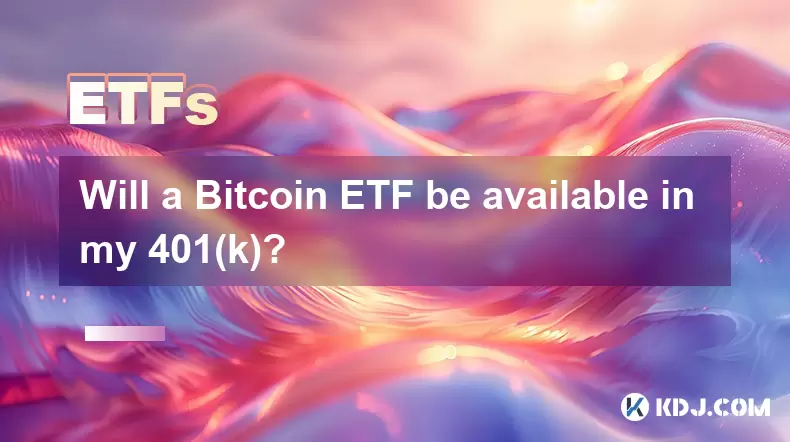
Will a Bitcoin ETF be available in my 401(k)?
Jul 17,2025 at 10:42pm
What is a Bitcoin ETF?A Bitcoin ETF (Exchange-Traded Fund) is an investment vehicle that tracks the price of Bitcoin without requiring investors to di...
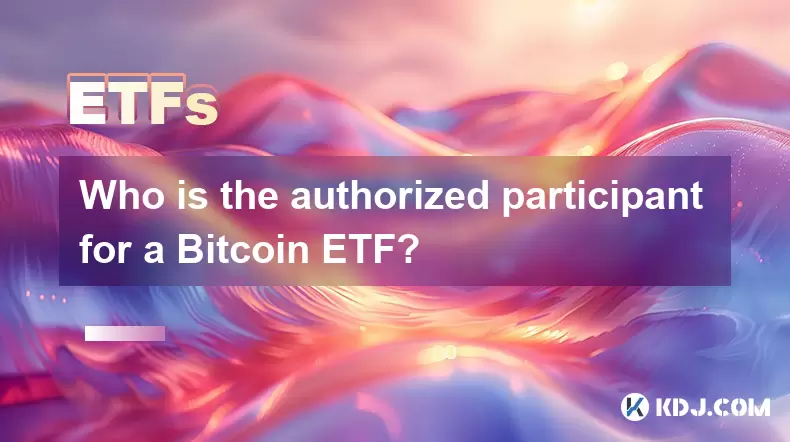
Who is the authorized participant for a Bitcoin ETF?
Jul 18,2025 at 12:42am
Understanding the Role of Authorized Participants in Bitcoin ETFsIn the context of Bitcoin Exchange-Traded Funds (ETFs), an authorized participant (AP...
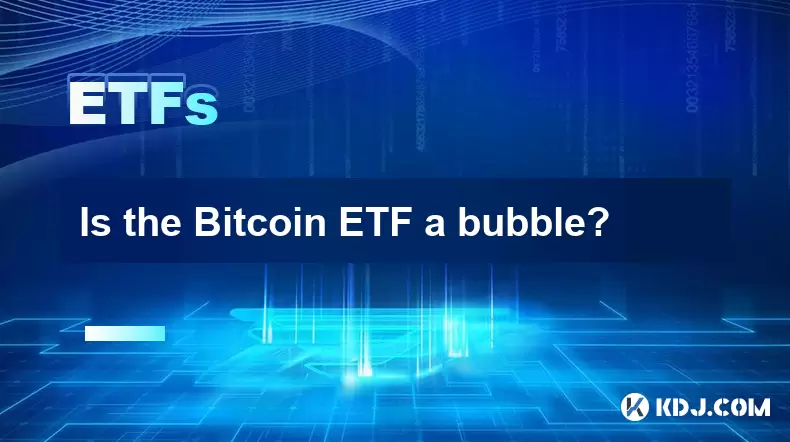
Is the Bitcoin ETF a bubble?
Jul 20,2025 at 06:57am
Understanding the Bitcoin ETF ConceptA Bitcoin Exchange-Traded Fund (ETF) is a financial product that aims to track the price of Bitcoin without requi...
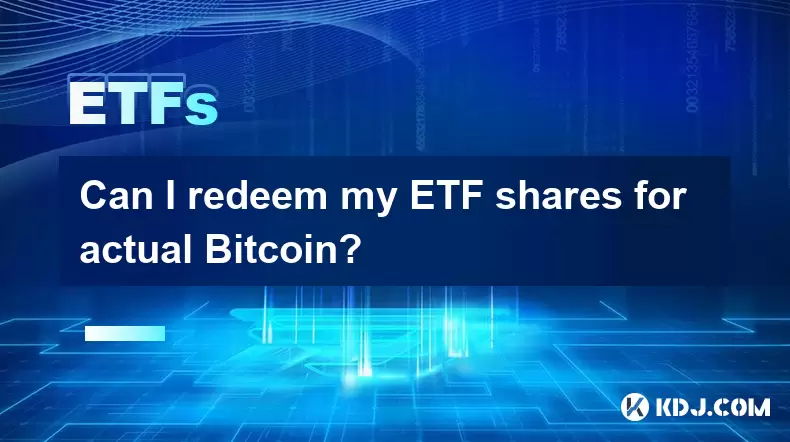
Can I redeem my ETF shares for actual Bitcoin?
Jul 17,2025 at 03:14pm
Understanding ETF Shares and Their Relation to BitcoinExchange-Traded Funds (ETFs) have become a popular investment vehicle for those looking to gain ...

What is the best platform to trade Bitcoin ETFs?
Jul 23,2025 at 04:14am
Understanding Bitcoin ETFs and Their Role in TradingBitcoin Exchange-Traded Funds (ETFs) have gained significant traction among traditional and crypto...

What is the best platform to trade Bitcoin ETFs?
Jul 17,2025 at 03:50pm
Understanding Bitcoin ETFs and Their Role in the MarketBitcoin Exchange-Traded Funds (ETFs) are investment vehicles that track the price of Bitcoin wi...

Will a Bitcoin ETF be available in my 401(k)?
Jul 17,2025 at 10:42pm
What is a Bitcoin ETF?A Bitcoin ETF (Exchange-Traded Fund) is an investment vehicle that tracks the price of Bitcoin without requiring investors to di...

Who is the authorized participant for a Bitcoin ETF?
Jul 18,2025 at 12:42am
Understanding the Role of Authorized Participants in Bitcoin ETFsIn the context of Bitcoin Exchange-Traded Funds (ETFs), an authorized participant (AP...

Is the Bitcoin ETF a bubble?
Jul 20,2025 at 06:57am
Understanding the Bitcoin ETF ConceptA Bitcoin Exchange-Traded Fund (ETF) is a financial product that aims to track the price of Bitcoin without requi...

Can I redeem my ETF shares for actual Bitcoin?
Jul 17,2025 at 03:14pm
Understanding ETF Shares and Their Relation to BitcoinExchange-Traded Funds (ETFs) have become a popular investment vehicle for those looking to gain ...
See all articles

























































































